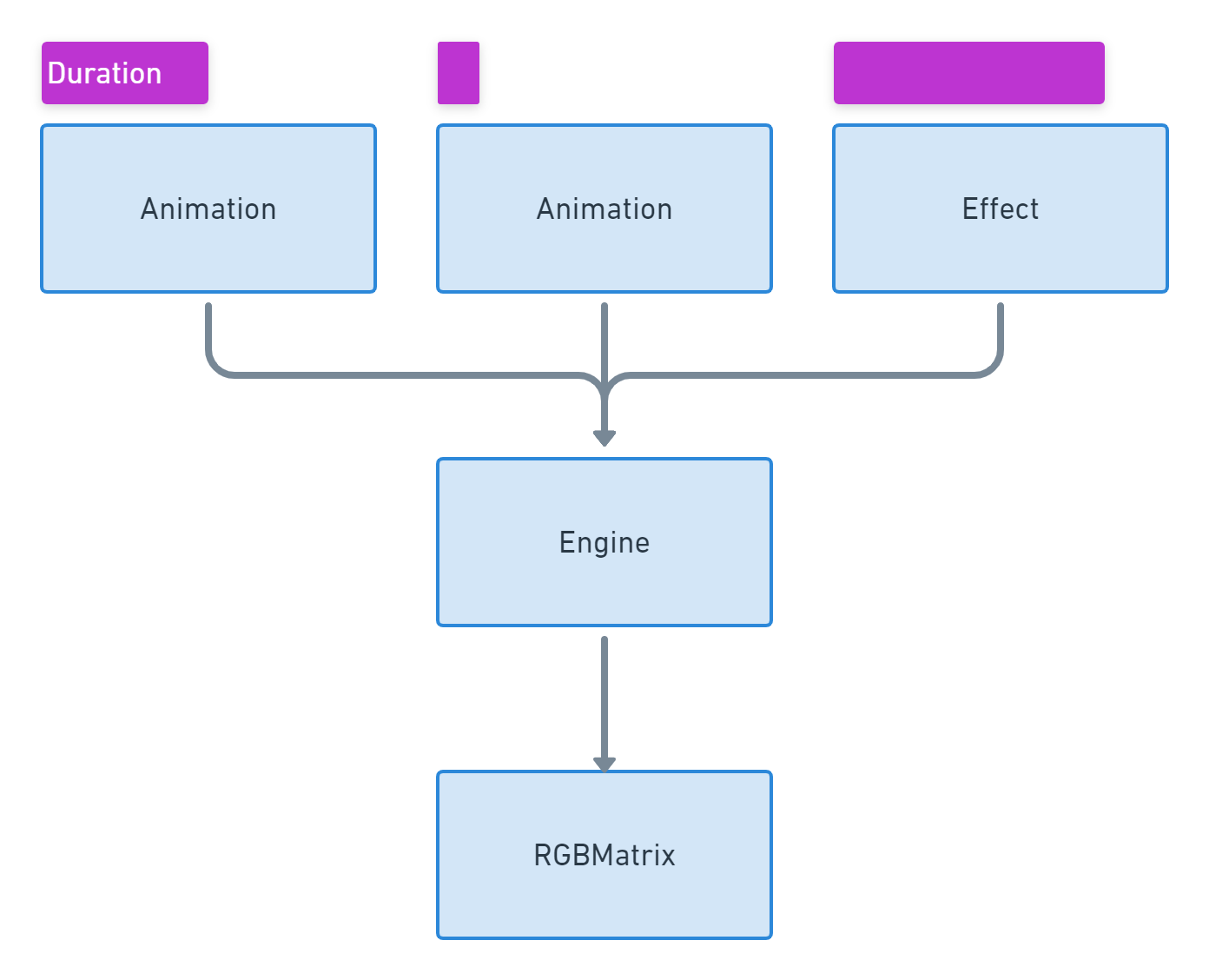-
Notifications
You must be signed in to change notification settings - Fork 10
Meeting Notes (2020 06 02)
Alex McLain edited this page Jun 25, 2020
·
6 revisions
Brainstorming
- An animation could start as a seed which has a motion vector and color vector.
- Pixel-based animations could use keyframes and tweening.
- Does chameleon in its current state help us with pixel blending?
-
AnimationvsEffect- Should frame-based animations be a different system than the math-based animations? - Should an animation have a black box state field that it can store state in that nothing else can access?
- How do we support something like Conway's Game of Life that relies on previous pixel state?
- How do we support the Simon game?
- Animations as a black box in general?
- The overall consensus seems to be yes, conceptually.
- Implementation: Should an animation be a GenServer?
- Pro: It could be a completely isolated component that can store its own internal state and emits messages (frames) to be rendered.
- Con: Emitting messages introduces concurrency between an animation and the renderer and leaves the frames to the mercy of the scheduler (unpredictable timing -- and ordering if we support multiple animations running at once). Frame pile-up.
- How can an animation know when to draw the next frame, and/or what the frame's content should be, when an event is received?
- Do we need a render
Engineto control timing, which animations are running, animation blending?- Should we have the concept of "base" properties that live inside an animation and have a "global" scaling factor for those properties that the engine can control?
- Probably not. It would be cool if each animation could receive events and modify its own properties.
- There are some animations that don't actually need to animate (solid colors). Do we really need to be requesting a next frame for these animations?
- An animation could return a term for not having a new frame to render.
- The compiler may already optimize for this case if the current frame is passed to the renderer as the next frame because it should be passing a pointer to the same data.
- What if the animation sent out a "program" (instruction set) to the render engine instead of frames?
- Should we have the concept of "base" properties that live inside an animation and have a "global" scaling factor for those properties that the engine can control?
- Integer rollover is a potential issue in a tick-based system, which could cause an animation glitch when the rollover happens.
- It should be very infrequent, but we know it will happen at some point.
- If we care about mitigating this, one way we could solve it is by allowing an animation designer to specify the tick where resetting the tick counter is seamless.
- We could also use a timestamp rather than an integer.
- Another option is to compute a delta value every time a frame is received rather than using a tick number.
- How do we integrate key presses into the system?
- Pub/sub system? A "key publisher"?
- An animation could subscribe to the key presses it cares about, for example.
- Bus architecture is also great for time-of-day based events.
- If blending animations, do we need an alpha channel?
- Should we have a
Gametype of animation that gives some kind of more direct access to the frame buffer(s)?
QMK
- There are runners and animations.
- Solid reactive cross (animation). link
- It returns an
effect_runnerthat determines how the animation plays. - There is an animation function that takes input params determined by the effect runner and outputs an
HSVa pixel color.
- It returns an
- The rainbow animation (nexus). link
- Hit tracker - Coordinates of the keys that have been pressed in the past.
- QMK does animation blending by looping over an animation and calculating the effect for each hit in the hit tracker. One effect's output is the next effect's input.
- The code for an effect is really complex and hard to understand what an effect is rendering.
- Chris: Spike some of the ideas from today's call.
- Nick: Play with vector space ideas.
